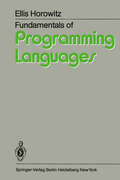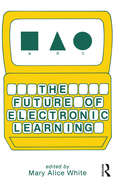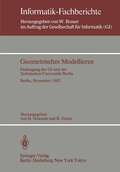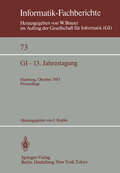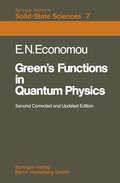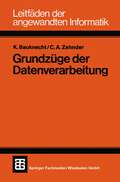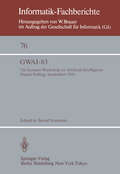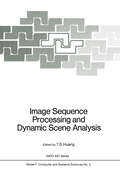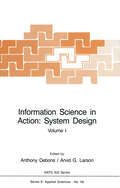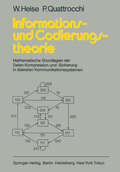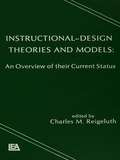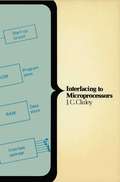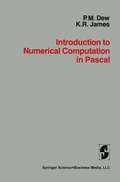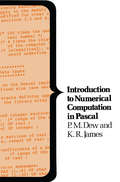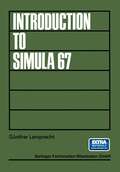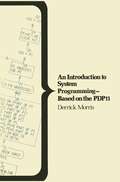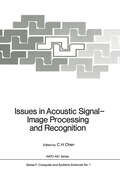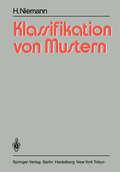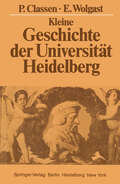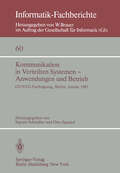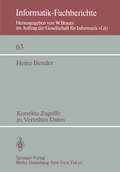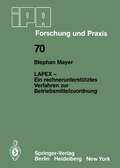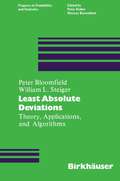- Table View
- List View
Fundamentals of Programming Languages
by E. Horowitz" .. .1 always worked with programming languages because it seemed to me that until you could understand those, you really couldn't understand computers. Understanding them doesn't really mean only being able to use them. A lot of people can use them without understanding them." Christopher Strachey The development of programming languages is one of the finest intellectual achievements of the new discipline called Computer Science. And yet, there is no other subject that I know of, that has such emotionalism and mystique associated with it. Thus my attempt to write about this highly charged subject is taken with a good deal of caution. Nevertheless, in my role as Professor I have felt the need for a modern treatment of this subject. Traditional books on programming languages are like abbreviated language manuals, but this book takes a fundamentally different point of view. I believe that the best possible way to study and understand today's programming languages is by focusing on a few essential concepts. These concepts form the outline for this book and include such topics as variables, expressions, statements, typing, scope, procedures, data types, exception handling and concurrency. By understanding what these concepts are and how they are realized in different programming languages, one arrives at a level of comprehension far greater than one gets by writing some programs in a vi vB Preface few languages. Moreover, knowledge of these concepts provides a framework for understanding future language designs.
The Future of Electronic Learning
by M. A. WhiteFirst Published in 1983. Routledge is an imprint of Taylor & Francis, an informa company.
The Future of Electronic Learning
by Mary Alice WhiteFirst Published in 1983. Routledge is an imprint of Taylor & Francis, an informa company.
Geometrisches Modellieren: Fachtagung der GI und der Technischen Universität Berlin Berlin, 24.–26. November 1982 (Informatik-Fachberichte #65)
by H. Nowacki R. GnatzGI — 13. Jahrestagung: Hamburg, 3.–7. Oktober 1983 Proceedings (Informatik-Fachberichte #73)
by I. KupkaGreen’s Functions in Quantum Physics (Springer Series in Solid-State Sciences #7)
by Eleftherios N. EconomouIn this edition the second and main part of the book has been considerably expanded as to cover important applications of the formalism. In Chap.5 a section was added outlining the extensive role of the tight binding (or equivalently the linear combination of atomic-like orbitals) approach to many branches of solid-state physics. Some additional informa tion (including a table of numerical values) regarding square and cubic lattice Green's functions were incorporated. In Chap.6 the difficult subjects of superconductivity and the Kondo effect are examined by employing an appealingly simple connection to the question of the existence of a bound state in a very shallow potential well. The existence of such a bound state depends entirely on the form of the un perturbed density of states near the end of the spectrum: if the density of states blows up there is always at least one bound state. If the density of states approaches zero continuously, a critical depth (and/or width) of the well must be reached in order to have a bound state. The borderline case of a finite discontinuity (which is very important to superconductivity and the Kondo effect) always produces a bound state with an exponentially small binding energy.
Grundzüge der Datenverarbeitung: Methoden und Konzepte für die Anwendungen (Leitfäden der Informatik)
by Kurt Bauknecht Carl August ZehnderGWAI-83: 7th German Workshop on Artificial Intelligence Dassel/Solling, September 19–23, 1983 (Informatik-Fachberichte #76)
by B. De NeumannImage Sequence Processing and Dynamic Scene Analysis (NATO ASI Subseries F: #2)
by T. S. HuangThis volume contains the proceedings of the NATO Advanced Study Institute on "Image Sequence Processing and Dynamic Scene Analysis" held 21 June - 2 July, 1982 in Hotel Maritim, Braunlage/Harz, Federal Republic of Germany. The organizing eommittee of the institute consists of T.S. Huang (Director), H.G. Musmann (Co Director), H.H. Nagel (Consultant), and C.E. Liedtke and W. Geuen (Local 'arrangement). This Institute was devoted to the rapidly emerging field of image sequence processing and dynamic scene analysis which has man! important applications in cluding target tracking, television bandwidth compression, highway traffic moni toring, and analysis of heart wall motion for medical diagnosis. The lectures and discussions in this Institute fell into three overlapping categories: Motion estimation; pattern recognition and artificial intelligence techniques in dynamic scene analysis; and, applications. 1) Motion estimation - One of the most important problems in image sequence analysis and dynamic scene analysis is displacement and motion estimation. For example, in interframe coding using temporal DPCM, displacement estimation and compensation can improve efficiency significantly. Also, estimated motion parameters can be powerful cues in target segmentation, detection, and classification. In this Institute, a number of recently developed techniques for displacement and motion estimation were discussed.
Information Science in Action: Volume I (Nato Science Series E: Ser. #1)
by Anthony Debons Arvid G. LarsonIn August 1978, one hundred or so scholars from several countries around the world met in Crete, Greece to discuss the progress made in designing information systems and the relation of information science to this activity. This was the Third Advanced Study Institute supported by the North Atlantic Treaty Organization, Brussels, Belgium. The first Institute was conducted in 1972 and held in Seven Springs, Pennsylvania. The results of this Institute were published by Marcel Dekker and titled Information Sc. ience: Search for Identity. The'second Institute was held at the College of Librarianship, Aberystwyth, Wales in the summer of 1974. The proceedings were published by Noordhoff International Publishing, Leyden, The Netherlands, entitled Perspectives of Information Science edited by A. Debons and Hilliam Cameron. The three institutes that were conducted shared a common purpose, namely, to assess the state of affairs of information science and to share this assessment with inter national community. Information science can be said to have emerged during the past two, three decades in response to the significant increase in data-knowledge processing technology, the growth of knowledge as the result of these trends and the increase in problem solving, decision making complexity that faced all institutions at all levels throughout the world. Information systems, for many reasons, remain as an abstraction. Nevertheless, considerable funds and human efforts are being expended on them. Thus, such systems are of vital concerns to both scientists and technologists who are involved in them.
Informations- und Codierungstheorie: Mathematische Grundlagen der Daten-Kompression und -Sicherung in diskreten Kommunikationssystemen
by W. Heise P. QuattrocchiInstructional Design Theories and Models: An Overview of Their Current Status
by Charles M. ReigeluthInstructional Design Theories and Models is a thorough yet concise overview of eight of the most comprehensive and best-known attempts to integrate knowledge about effective and appealing instruction. Chapters were written by the original theorists to provide a more accurate and behind-the-scenes look at the theories' development. Instructional Des
Instructional Design Theories and Models: An Overview of Their Current Status
by Charles M. ReigeluthInstructional Design Theories and Models is a thorough yet concise overview of eight of the most comprehensive and best-known attempts to integrate knowledge about effective and appealing instruction. Chapters were written by the original theorists to provide a more accurate and behind-the-scenes look at the theories' development. Instructional Des
Introduction to Numerical Computation in Pascal
by DEW/JAMESOur intention in this book is to cover the core material in numerical analysis normally taught to students on degree courses in computer science. The main emphasis is placed on the use of analysis and programming techniques to produce well-designed, reliable mathematical software. The treatment should be of interest also to students of mathematics, science and engineering who wish to learn how to write good programs for mathematical computations. The reader is assumed to have some acquaintance with Pascal programming. Aspects of Pascal particularly relevant to numerical computation are revised and developed in the first chapter. Although Pascal has some drawbacks for serious numerical work (for example, only one precision for real numbers), the language has major compensating advantages: it is a widely used teaching language that will be familiar to many students and it encourages the writing of clear, well structured programs. By careful use of structure and documentation, we have produced codes that we believe to be readable; particular care has been taken to ensure that students should be able to understand the codes in conjunction with the descriptive material given in the book.
An Introduction to System Programming — Based on the PDP11 (Computer Science Series)
by Derrick MorrisIssues in Acoustic Signal — Image Processing and Recognition (NATO ASI Subseries F: #1)
by C. H. ChenThe NATO Advanced Research Workshop on Issues in Acoustic Signal/Image Processing and Recognition was held August 5-9, 1982 at the Cappuccini complex in San Miniato Italy. The Workshop was primarily concerned with the underwater acoustic signal processing and seismic signal analysis and a major effort was made to link these topics with pattern recognition, i~ge processing and artificial intelligence. Major issues and new approaches in these interrelated areas were closely examined in the Workshop. In addition to paper presentations three discussion sessions were held on! (1) spectral analysis in underwater acoustics, (2) seismic wave propaga tion, seismic imaging and migration, and seismic inversion, and (3) unresolved issues and future directions. This Proceedings volume includes most presentations made at the Workshop. The publication, like the meeting itself, is unique in the sense that it provides exten sive interactions among the closely related areas stated above. Such interactions which usually result in the integration of different systems or approaches are certainly much needed to achieve some performance breakthrough while individual systems or approaches reach their performance limit. I am grateful to all participants for their active participation that makes the Workshop very productive, and to Dr. Lewis J. Lloyd and Dr. Ralph Goodman for their help to arrange an informative visit to the SACLANT ASW Research Centre for the Workshop participants. I am confident that this publication will be equally produc tive to report important current research results and near-future research activity particularly in underwater acoustic signal processing.
Kommunikation in Verteilten Systemen — Anwendungen und Betrieb: GI/NTG — Fachtagung, Berlin, 19–21 Januar, 1983 (Informatik-Fachberichte #60)
by S. Schindler O. SpaniolKorrekte Zugriffe zu verteilten Daten (Informatik-Fachberichte #63)
by H. BenderEine unabdingbare Voraussetzung für den Betrieb universeller verteilter DV-Systeme ist eine dezentral durchgeführte Zugriffssynchronisation. Diese muß für global konkurrierende Zugriffe zu verteilten Daten das Korrektheitskriterium der Serialisierbarkeit garantieren. Es gibt zwar eine weitgehend ausgereifte Theorie für die Serialisierbarkeit und teilweise auch für die (zentrale) Zugriffssynchronisation, aber eine Theorie zur dezentralen Verwaltung steht noch aus. Das Kernproblem ist, daß es keinen global einheitlich beobachtbaren Systemzustand eines verteilten Systems gibt und daß trotzdem global gültige Entscheidungen zu treffen sind. In. der vorliegenden Arbeit wird nun ein neuer, systematischer Ansatz vorgestellt, der dieses Problem für die Zugriffssynchro nisation löst und der stets nur eine räumlich und zeitlich exakt begrenzte Kooperation verteilter Verwaltungsinstanzen erfordert. Zwei neue darauf aufbauende Verfahren zur dezentra len Zugriffssynchronisation werden beschrieben. Ihre Korrekt heit wird formal nachgewiesen. Das erste der neuen Verfahren wurde auch experimentell untersucht, sodaß hierfür quantitative Leistungsaussagen gemacht werden können. Der vorliegende Band entspricht meiner von der Fakultät für Informatik der Universität Karlsruhe genehmigten Dissertation. Die mündliche prüfung fand am 3.11.1982 statt. Mehreren Mitgliedern der Fakultät für Informatik habe ich für ihren Beitrag zum Gelingen dieser Arbeit zu danken: Herrn Prof. Dr. H. Wettstein für wichtige Diskussionsbeiträge und für die Übernahme des Erstreferats, Herrn Prof. Dr. G. Krüger für die Übernahme des Korreferats und Herrn Heinz Zoller für seine unterstützung bei der Durchführung der Experimente. Herzlicher Dank gebührt auch meiner Ehefrau Inge für ihre Geduld und Unterstützung während der Anfertiqung dieser Arbeit.
LAPEX — Ein rechnerunterstütztes Verfahren zur Betriebsmittelzuordnung (IPA-IAO - Forschung und Praxis #70)
by S. MayerLeast Absolute Deviations: Theory, Applications and Algorithms (Progress in Probability #6)
by P- Bloomfield SteigerLeast squares is probably the best known method for fitting linear models and by far the most widely used. Surprisingly, the discrete L 1 analogue, least absolute deviations (LAD) seems to have been considered first. Possibly the LAD criterion was forced into the background because of the com putational difficulties associated with it. Recently there has been a resurgence of interest in LAD. It was spurred on by work that has resulted in efficient al gorithms for obtaining LAD fits. Another stimulus came from robust statistics. LAD estimates resist undue effects from a feyv, large errors. Therefore. in addition to being robust, they also make good starting points for other iterative, robust procedures. The LAD criterion has great utility. LAD fits are optimal for linear regressions where the errors are double exponential. However they also have excellent properties well outside this narrow context. In addition they are useful in other linear situations such as time series and multivariate data analysis. Finally, LAD fitting embodies a set of ideas that is important in linear optimization theory and numerical analysis. viii PREFACE In this monograph we will present a unified treatment of the role of LAD techniques in several domains. Some of the material has appeared in recent journal papers and some of it is new. This presentation is organized in the following way. There are three parts, one for Theory, one for Applicatior.s and one for Algorithms.
